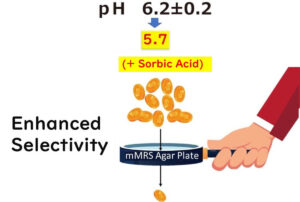In this article, we emphasize the critical importance of understanding the components within culture mediums, especially in relation to how bacteria's varying sensitivities to hydrophobic functional groups are exploited in food safety testing. We explore the strategic application of this knowledge in using desoxycholate agar and BGLB broth for testing coliforms. Dive into how mastering the intricacies of medium components not only enhances the accuracy of bacterial detection but also reflects the clever subtleties of microbiological science. Ready to unravel the secrets behind each ingredient?
The Importance of Understanding Media Components
First off, it’s a good idea to check the following article for a brush-up on Gram staining and resistance to chemical agents.
The Extraordinary Relationship between Gram Staining and Microbial Properties
Understanding the principles behind the components of microbiological testing media is crucial. Without this, one might be tossed about by the superficial judgment methods in the media manufacturer's manual, never truly mastering the flexible application of culture results. A common scenario involves graduates and professionals who, upon spotting a colony in a targeted media, frantically phone for advice. A typical issue with these inquirers is their near-total lack of comprehension regarding media components. Particularly, the appearance or absence of colonies can cause confusion if one does not grasp the principles of selective agents. The purpose of this article is to underscore a simple fact: such selection principles are mostly determined by the susceptibility of Gram-positive and Gram-negative bacteria to compounds with hydrophobic functional groups.

Specifically, media developed for testing certain microbes are fundamentally based on the following two principles:
- Principle of Selection: Additives inhibit the growth of non-target microbes while allowing target microbes to flourish.
- Principle of Identification: Features are designed to visually identify target microbes based on their physiological metabolic functions.
This article aims to explain how the differences in susceptibility to compounds with hydrophobic functional groups between Gram-positive and Gram-negative bacteria can be applied, touching mainly on the principle of selection mentioned above.
To put it plainly, the selective agents for Gram-negative bacteria like E. coli, Salmonella, and Vibrio cholerae consist of a straightforward mechanism: “elimination of Gram-positive bacteria via hydrophobic compounds.” I'll elaborate on this point while citing examples of typical media below.
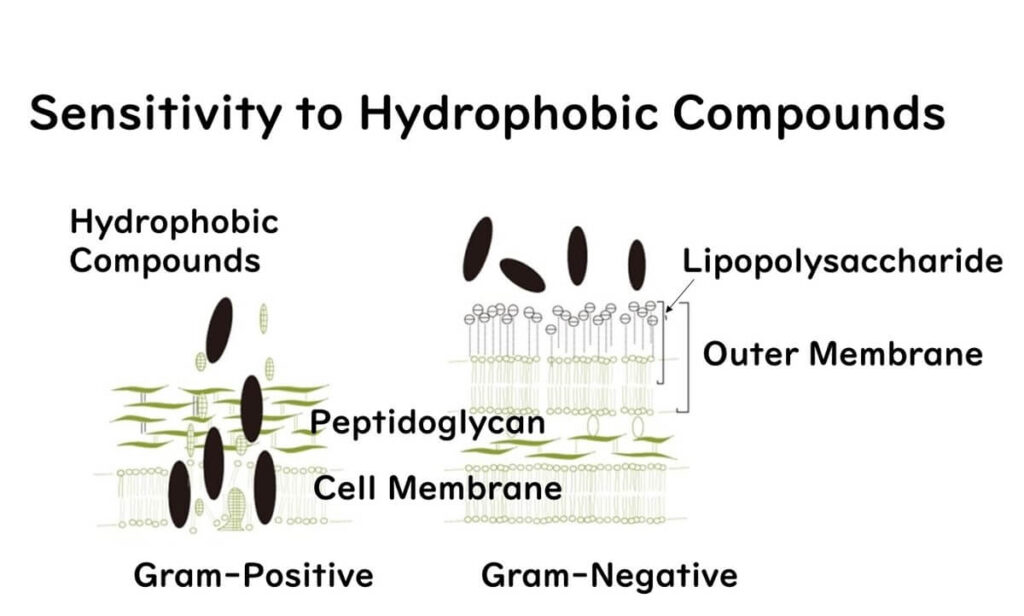
Desoxycholate Agar Plates
Let’s talk about the principle of selection. As mentioned in the previous section, Gram-positive bacteria are more susceptible to staining with crystal violet, whereas Gram-negative bacteria are less so. This is because the hydrophobic functional groups in crystal violet can more easily penetrate the cell walls, making inhibition of growth more likely.
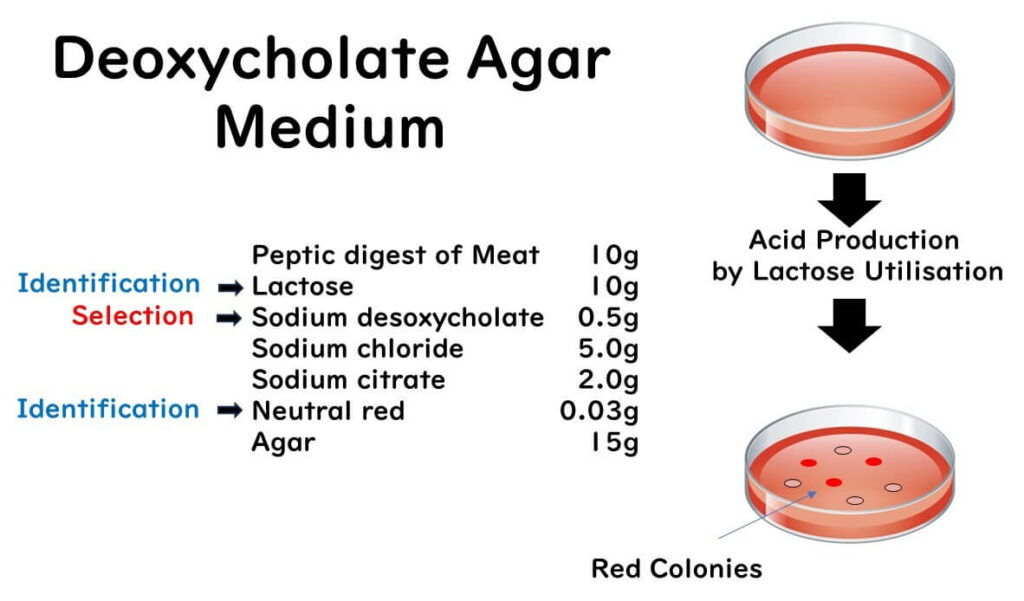
In the case of Escherichia coli testing media, sodium deoxycholate is added as a selective agent in deoxycholate agar media. Sodium deoxycholate is a bile salt, which is an amphipathic compound produced in the liver as a kind of soap to break down fats and secreted from the gallbladder. It consists of a benzene ring and a carboxyl group.
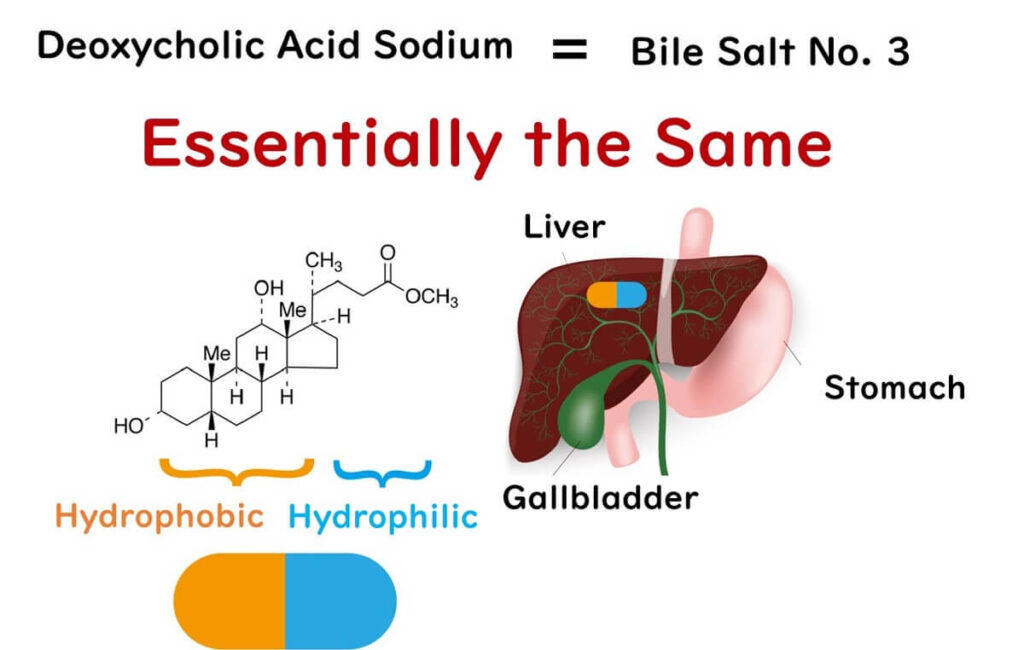
It's important to note that both crystal violet used in Gram staining and deoxycholate have amphipathic properties due to their hydrophobic and hydrophilic functional groups. This means that if Gram-positive bacteria are easily stained by crystal violet, they are also easily inhibited by sodium deoxycholate.
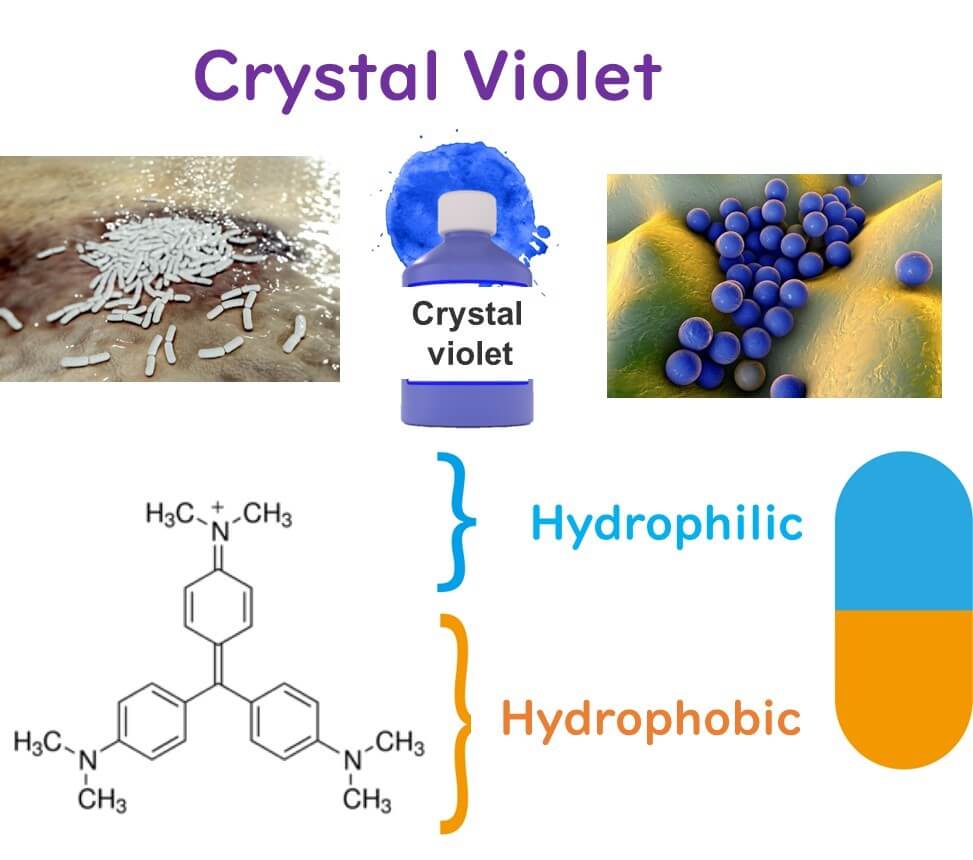
Thus, the use of sodium deoxycholate is not exclusively a selective system that allows only the growth of coliform bacteria. As you might infer from understanding the media components, this medium contains only bile salts as a microbial growth inhibitor. Essentially, it aims to exclude as many Gram-positive bacteria as possible while creating an environment where all Gram-negative bacteria, like the coliform group, can grow. Therefore, it is crucial to understand that the appearance of colonies alone does not distinguish coliform bacteria.
Although not covered in detail in this article, identifying devices are necessary to differentiate only coliform bacteria among colonies that appear on sodium deoxycholate media. This involves using the characteristic metabolism of the target foodborne pathogens to discriminate by color. Typically, a carbohydrate that only the target foodborne pathogen can utilize is added to the media. When the pathogen metabolizes the carbohydrate, the pH of the media drops. This change in pH is detected by a pH indicator, coloring the area around the colony to help identify the target organism. As previously mentioned in another article, coliforms are defined as lactose-fermenting Gram-negative bacteria. Therefore, here, a visual judgment can be made based on the ability to ferment lactose. Specifically, the production of acid around the colony lowers the pH, which is detected by the pH indicator, making the surrounding area red.
In any case, it’s essential to understand here that in the testing media for coliform bacteria, the difference in susceptibility to hydrophobic functional groups between Gram-positive and Gram-negative bacteria is simply used as a principle of selection.
BGLB Broth Fermentation
The scenario is similar with BGLB fermentation tubes. The media components include bovine bile salts and brilliant green as selective agents. As previously discussed, bovine bile salts are, in fact, bile acids. Brilliant green, on the other hand, is a dye that, like crystal violet used in Gram staining, has both benzene rings and hydrophilic parts. Thus, brilliant green, much like crystal violet and bile acids, selectively inhibits the growth of Gram-positive bacteria through a similar mechanism.
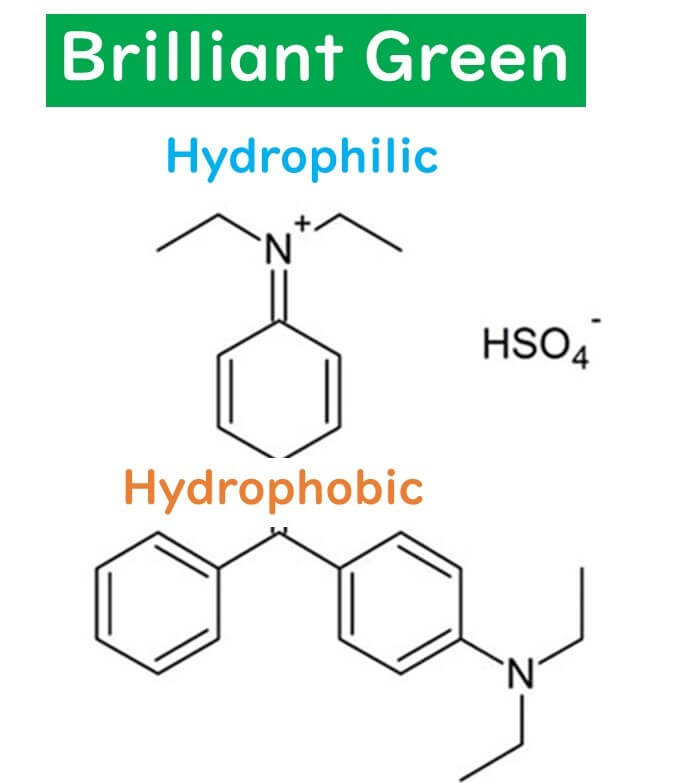
It's important to note that the mechanism in BGLB fermentation tubes does not exclusively promote the growth of coliform bacteria but rather inhibits the growth of Gram-positive bacteria in general. Understanding this is crucial when interpreting test results.
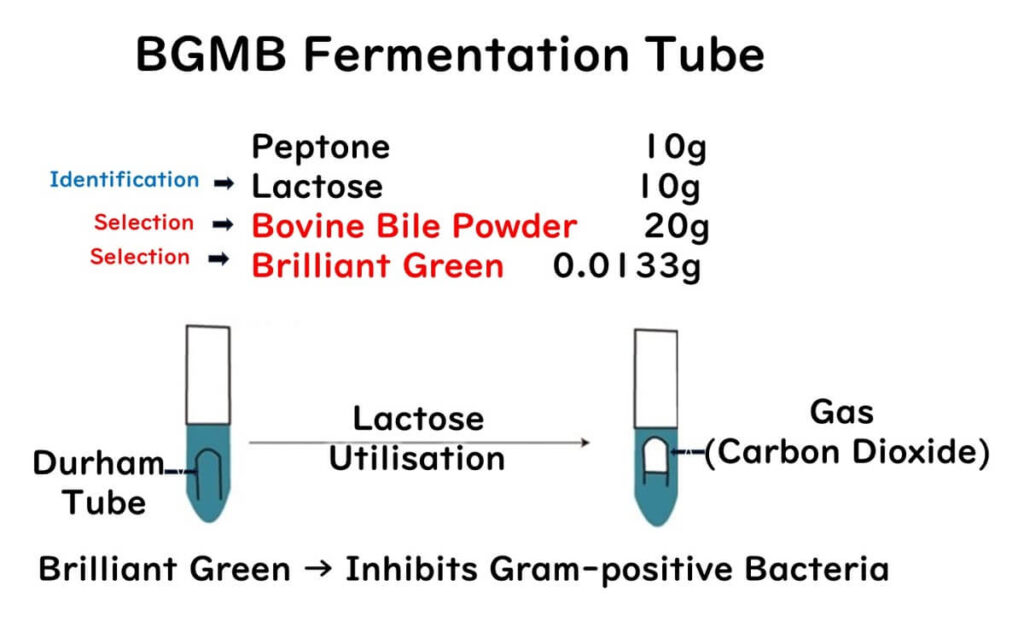
Let’s also briefly touch on the principle of identification used in BGLB tubes. As defined in the article about coliforms, they are Gram-negative rods that ferment lactose to produce gas. In BGLB tubes, not only coliforms but all Gram-negative bacteria can grow. However, the ability to ferment lactose is used as a clever means of identification. When lactose is fermented, carbon dioxide is produced. This CO2 is trapped in a small inverted glass tube placed inside the test tube, known as a Durham tube. If the Durham tube rises due to the accumulation of carbon dioxide, it indicates a positive result for the presence of coliform bacteria.
Although this explanation is simplified using the example of coliform media, what readers should grasp is not just a superficial understanding of the media but the fundamental principles behind each type of media. This understanding fosters flexibility and applicability, preventing one from being swayed by mere surface phenomena.

